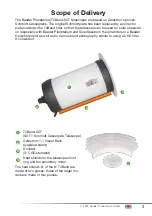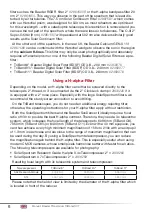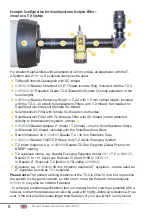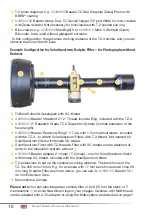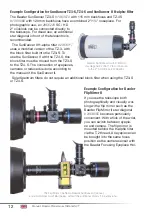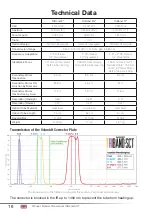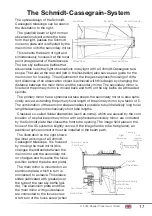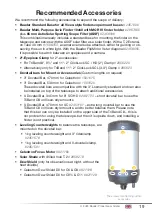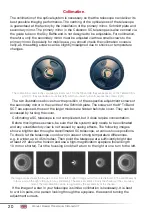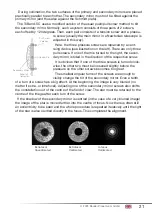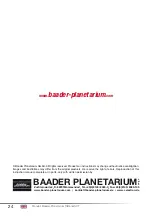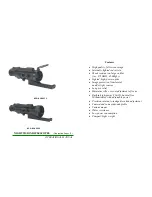
14
Manual: Baader Planetarium TriBand-SCT
• Wait for moments of good seeing. The large aperture leads to a high minimum mag-
nification, so that disturbing influences of bad seeing become visible, which are not
noticeable in smaller instruments. Observe the local conditions at your observation
site during the course of the day; the air is usually calmest in the morning.
• Keep your distance. Especially for photography, you can set up the control PC at a
greater distance behind the telescope. Even sitting next to the telescope can have a
negative effect on local seeing.
• Use a good glare shield. Both good eyecups and an observation cloth which is
white on the outside and black on the inside and which is pulled over your head are
very effective in blocking stray light and increasing the perception of detail.
• Avoid exit pupils that are too large. If the exit pupil is larger than the pupil of your
eye (approx. 1.5 mm during the day), you will see the "shadow" of the telescope's
secondary mirror floating in the image as a black spot.
• Avoid too small exit pupils when observing in H-alpha. The rule of thumb that the
maximum magnification is twice the telescope aperture in millimetres (i.e. an exit
pupil of 0.5 mm) does not apply to H-alpha observation because of the longer
wavelength. If the exit pupil is much smaller than about 0.8-0.7 mm, the image
contrast will eventually break down.
• Use a double polarising filter or a single circular polarising filter to suppress reflec-
tions. Some light attenuation can also make it easier to perceive faint structures.
• Some monochrome cameras show conspicuous Newtonian rings on H-alpha filters,
which cannot be eliminated even by flats. They are caused by interference in the
camera. Sometimes they only appear when observing with (or without) a reducer.
There are two ways to eliminate them:
1. A tilter can tilt the camera so far that no
more interference occurs. However, it
may be necessary to tilt the camera so
much that, with large sensors, even at
f/30, parts of the sensor are no longer in
the focal plane.
2. An ADC (Atmospheric Dispersion Cor-
rector) can also effectively eliminate the
Newtonian rings and is better suited for
this than a tilter. Make sure that the ADC
has sufficient free aperture.
• When photographing solar structures, it can be useful to use guiding with an
autoguider even for the sun, so that the structures remain centred in the image for
a long time. You can connect a guiding camera via the VarioFinder with a suitab-
le solar filter (see p. 19). Software such as Sharpcap offers the option of "feature
tracking" to also track sunspots.
• Take flats to compensate for dirt on the sensor or on the telescope.
Newtonian rings are the result of interferences in
monochrome cameras (here a ZWO ASI120MM).



